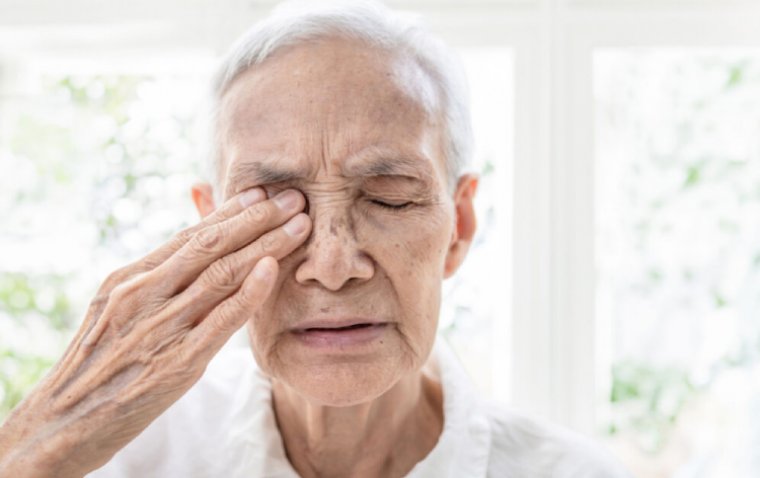
Temporary and Sudden Vision Loss in One Eye: What You Need to Know
Experiencing sudden or temporary loss of vision in one eye can be a distressing event, signaling an underlying health issue that may require urgent medical intervention. This comprehensive guide delves into the symptoms, causes, diagnostic approaches, and treatment options for temporary loss of vision in half of one eye, combined with sudden loss of vision in the entire eye, offering essential insights for individuals seeking to understand these conditions.
Understanding the Symptoms
1. Temporary Loss of Vision
Temporary vision loss, also known as transient visual loss, can occur in just half of the eye, affecting the patient's field of vision partially. This phenomenon may last from a few seconds to several minutes and often resolves on its own. However, it should never be ignored as it could indicate a more serious condition.
2. Sudden Loss of Vision
Sudden vision loss in one eye is characterized by a rapid decline in sight, which can happen instantly or over a few hours. Unlike temporary vision loss, this condition may not resolve without medical intervention, and in some cases, it may lead to permanent visual impairment if not promptly addressed.
Potential Causes Behind Vision Loss
The causes of temporary and sudden vision loss are diverse, ranging from benign to life-threatening conditions:
● Ocular Migraine: A condition that can cause temporary visual disturbance or blindness in one eye, often accompanied by headaches.
● Temporal Arteritis: Inflammation of the arteries in the temple, which can lead to sudden vision loss if the inflammation affects the blood supply to the eye.
● Retinal Vein Occlusion: A blockage in the vein that can lead to sudden vision loss due to the buildup of blood and fluid in the retina.
● Retinal Detachment: The pulling away of the retina from its normal position, leading to sudden but progressive vision loss.
● Optic Neuritis: Inflammation of the optic nerve that can cause sudden loss of vision in one eye, often associated with pain.
● Macular Degeneration: Especially affects the central vision, leading to vision loss in one or both eyes, primarily in older adults.
● Glaucoma: An increase in intraocular pressure can damage the optic nerve, leading to gradual vision loss, initially often unnoticed until it becomes severe.
● Cataracts: The lens of the eye becomes cloudy, obscuring vision, though this usually develops slowly and can affect both eyes.
● Traumatic Injury: Physical injury to the eye or orbit can lead to immediate vision loss due to damage to the eye's structures.
● Brain Tumors or Lesions: Tumors or lesions on the parts of the brain responsible for processing visual information can lead to vision loss in one eye, depending on the tumor's location.
Infections: Certain infections, such as ocular herpes, can affect the eye and lead to vision loss.
How to Diagnose Vision Loss

Diagnosing vision loss involves a comprehensive evaluation by eye care professionals to determine the underlying cause of the decrease in sight.
1. Medical History Review: Gathering detailed information on symptoms, lifestyle, and any systemic health issues that could impact vision.
2. Comprehensive Eye Examination: Assessing visual acuity, eye pressure, and the health of eye structures through various tools and techniques.
● Slit lamp examinations
● Fundus photography
● Optical coherence tomography (OCT)
3. Specialized Testing: Conducting specific tests to diagnose particular conditions, which may include:
● Visual field testing
● Fluorescein angiography
● Electrophysiological tests
4. Blood Tests and Imaging Studies: Performing additional tests to identify or rule out systemic diseases affecting the eyes.
This structured approach ensures an accurate diagnosis, crucial for effective management and treatment of vision loss. Early detection allows for the timely initiation of therapies that can potentially halt or slow down the progression of the impairment, and in some cases, may even restore sight.
Managing Temporary and Sudden Vision Loss
Treatment for temporary and sudden vision loss depends on the underlying cause:
1. Seek Immediate Medical Attention: Consult an eye care professional or visit an emergency department right away for a proper diagnosis.
2. Follow Prescribed Treatments: Adhere to all treatments and medications prescribed by your healthcare provider, which might include:
● Anti-inflammatory medications for conditions like optic neuritis.
● Specific treatments for eye conditions such as glaucoma or retinal detachment.
3. Make Lifestyle Adjustments: Implement changes recommended by your healthcare provider, including:
● Improving dietary habits.
● Managing blood sugar levels for diabetic patients.
● Reducing screen time to lessen eye strain.
4. Regular Follow-ups: Schedule and attend follow-up appointments with your eye care professional to monitor your condition and adapt your treatment plan as needed.
Promptly addressing temporary and sudden vision loss is key to managing the condition effectively and preventing potential long-term impacts on your vision.
How to Prevent Sudden or Temporary Vision Loss
Preventing sudden or temporary vision loss involves a combination of healthy lifestyle choices, regular eye care, and being aware of risk factors. Here are strategies to help reduce the risk:
● Schedule Regular Eye Exams: Regular check-ups can detect early signs of eye conditions that could lead to vision loss if untreated.
● Manage Chronic Health Conditions: Conditions like diabetes and high blood pressure can affect your vision. Manage them with a healthy diet, regular exercise, and medication as prescribed.
● Wear Protective Eyewear: Use safety glasses or goggles when involved in sports, working with tools, or handling hazardous chemicals to prevent eye injuries.
● Limit Screen Time: Reduce the risk of digital eye strain by taking regular breaks using the 20-20-20 rule (every 20 minutes, look at something 20 feet away for 20 seconds).
● Quit Smoking: Smoking increases the risk of eye diseases like macular degeneration and cataracts, which can lead to vision loss.
● Wear Sunglasses: Protect your eyes from harmful UV rays by wearing sunglasses that block 100% of UV-A and UV-B radiation.
● Know Your Family's Eye Health History: Some eye diseases are hereditary, so knowing your family history can help you take preventative steps.
● Eat a Healthy Diet: Consuming foods rich in omega-3 fatty acids, zinc, and vitamins C and E can help ward off age-related vision problems.
● Exercise Regularly: Physical activity can reduce the risk of conditions like macular degeneration and glaucoma.
.jpg)
Conclusion
Sudden or temporary loss of vision in one eye is a significant health concern that warrants immediate medical attention. Understanding the potential causes, recognizing the symptoms, and seeking timely diagnosis and treatment can help mitigate the risk of permanent damage and preserve vision. If you experience any form of sudden or temporary vision loss, contact your healthcare provider immediately to determine the necessary steps for your health and safety.
Reference:
(1).jpg)










